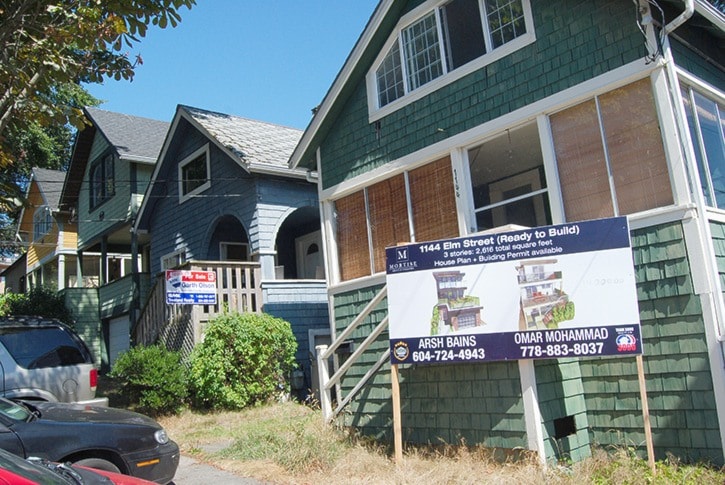The H-word is raising its ugly head in Surrey and White Rock again.
Politicians, developers and real-estate agents are hoping its use will soon decline so they can continue to give the green light to destruction of the few remaining reminders of the past that get in the way of growth.
The H-word, of course, is “heritage” – in particular heritage buildings. They are a nuisance to growth-oriented cities like Surrey and White Rock because they often sit on more land than a contemporary building does. In addition, the taxes they bring in are low.
Perhaps most gratingly, they get in the way of development plans and tie up planning departments, taking them away from the massive developments that allow cities to sprawl and mayors to beat their chests about how important their cities are.
An excellent story by Cloverdale Reporter editor Jennifer Lang details how Surrey basically ignores its own heritage register and heritage advisory commission.
The latest example is the Neville C. Curtis house on 182 Street in Cloverdale. The heritage advisory commission asked planning staff for a 60-day protection order, after a request was made for a demolition permit.
In March, Surrey Coun. Dave Woods said there was nothing the city could do because the home was privately owned. In other words, the heritage register is meaningless.
There were at one time many potential heritage homes on that street. One, the Currie house, was actually moved by the city at great expense. It languished on blocks for several years, until the city finally demolished it. In that case, the city was the owner – but couldn’t bother to preserve the home.
A similar fate overtook the Orange Hall, which was built in the 1891, moved by the city, and torn down last year after languishing for 22 years.
Only one home on 182 Street has a chance of withstanding the current drive to build massive homes. The Cecil Heppell house at 5818 182 St. is formally protected by a Heritage Revitalization Agreement. This is the city’s main tool for preservation, but is almost never used unless the owner consents.
Cloverdale, given that it was Surrey’s first small town, has been particularly hit hard by this official attitude towards the past. Not all of its heritage buildings can be saved, but some should be.
The same skittishness towards the past is also on display in White Rock.
There is no better example of what White Rock once was than the homes and vintage apartment building on the east side of Elm Street in West Beach.
Until recently, these homes were in immaculate condition, and walking down the street was an opportunity to glimpse back to the days when White Rock was primarily a summer resort town.
Now, one home has a sign in front with photos of a “plan” for a new home on the lot. The one next to it is for sale. Unquestionably, the others are threatened as well, as is the small apartment block.
Lorraine Ellenwood’s book Years of Promise, White Rock 1858-1958 states that “Elm has the distinction of being White Rock’s oldest inhabited street (other than Marine).” It details when the five cottages were built – between 1910 and 1913 – and states that the apartment block sits on the site of a home built by customs officer Alex Smith and later lived in by the Merklin and J.E. Gardiner families.
Most of the homes built in White Rock’s early days are long gone. Given the property values, it is understandable why.
However, Elm Street offers a unique look into the earlier, less hectic days. City council and heritage organizations should work together to somehow preserve that short stretch of streetscape.
Frank Bucholtz writes Wednesdays for Peace Arch News, as well as at frankbucholtz.blogspot.ca
frank.bucholtz@gmail.com
